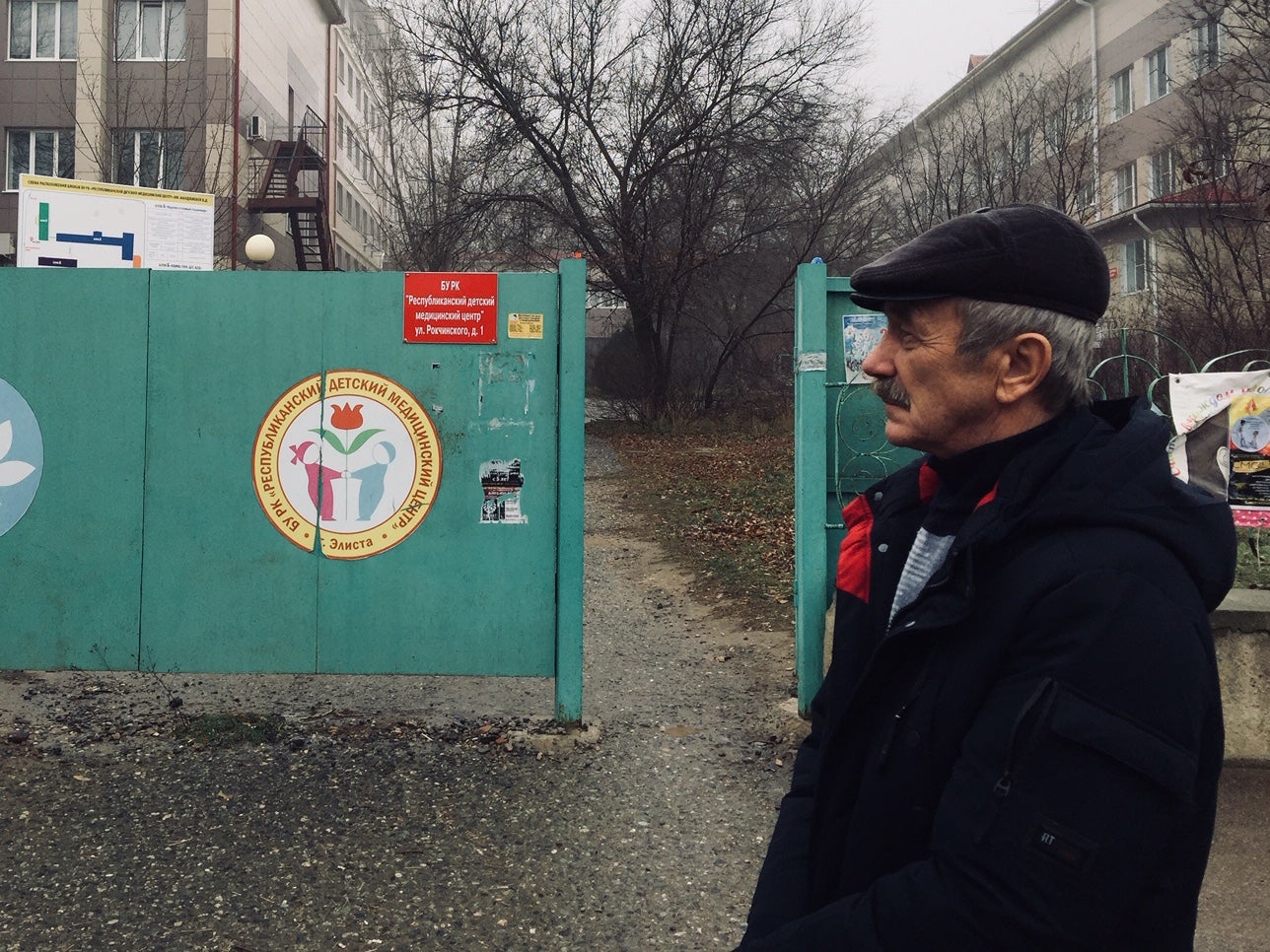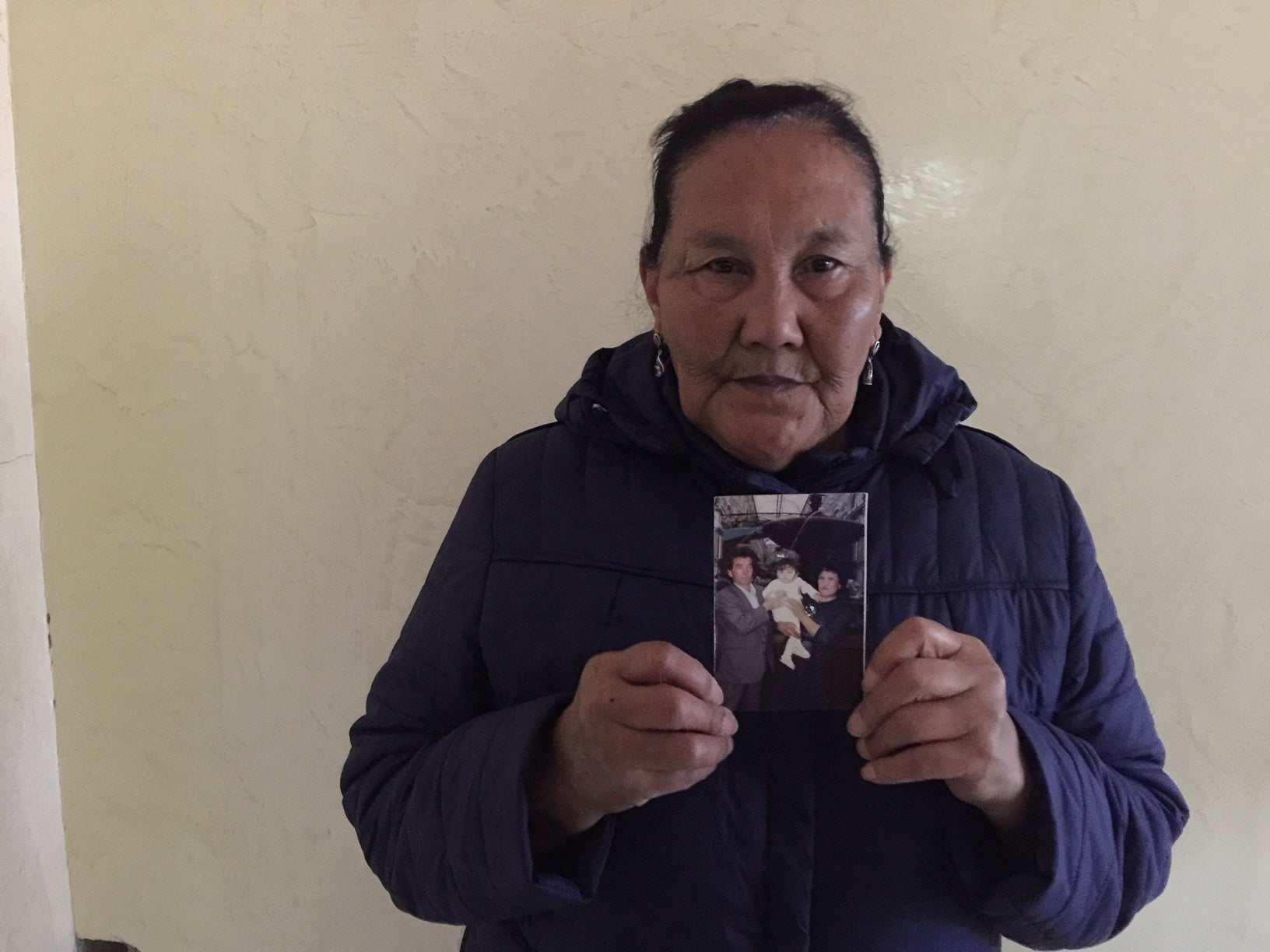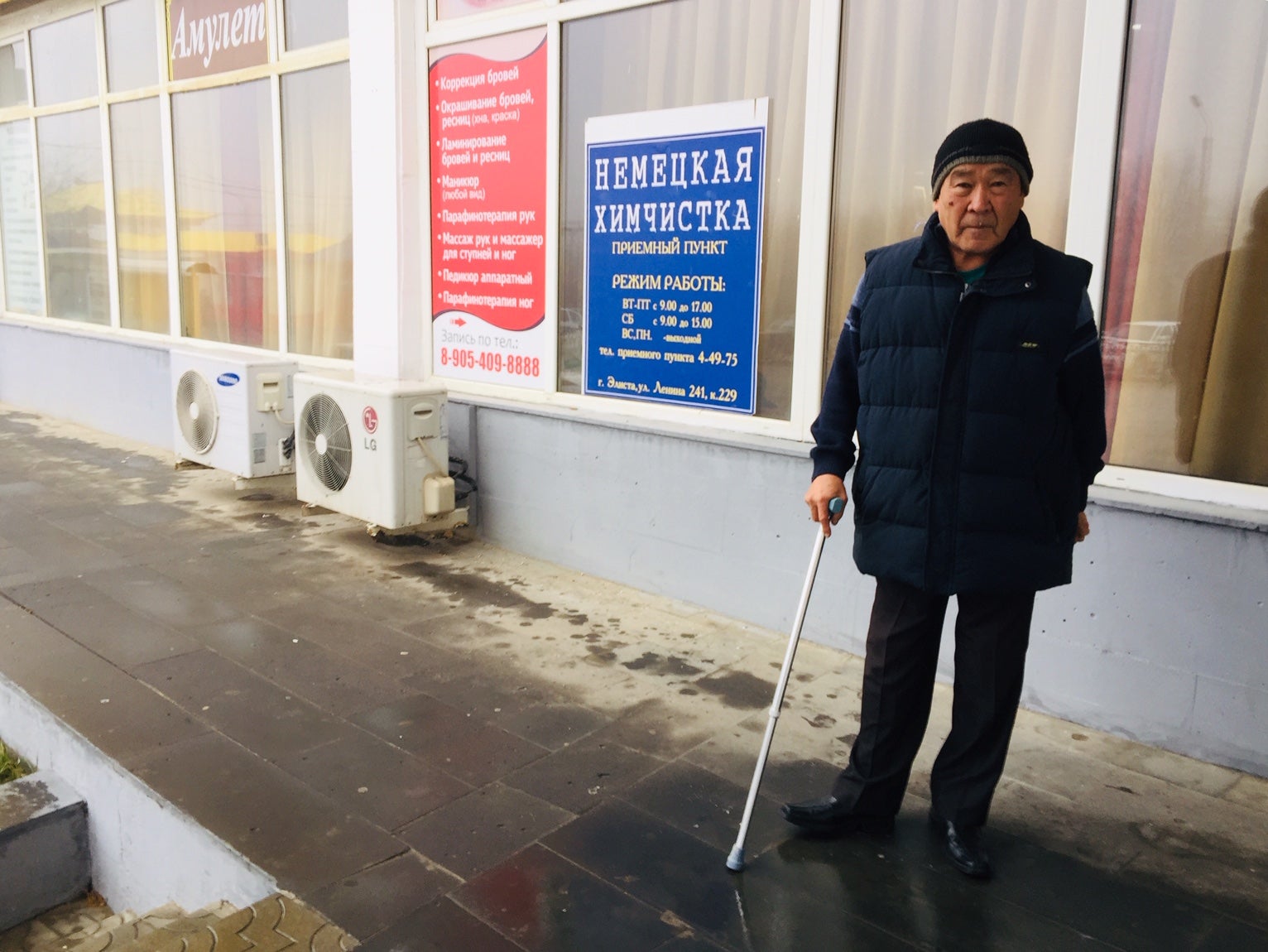Three decades after ‘Western HIV plague’ hit USSR, this tiny community is still coming to terms with the devastation and lost children
World Aids Day 2019: In 1988, a children's hospital in the provincial town of Elista became the epicentre of the Soviet Union's first ever HIV crisis. A total of over 270 children were eventually diagnosed with the virus– but for the families it was only the start of a savage injustice, writes Oliver Carroll


The lives were short and wretched. Children died in their parents’ arms, some barely a year old. Others were abandoned in their hospital beds. Those kids who were told about their diagnosis understood little about it. Instinctively, though, they knew what it meant: ostracisation, isolation, fear.
For the parents, the torment was only just beginning.
Maria Sholdayeva, 67, whose son Vadim fell ill just short of his first birthday, says she spent his three remaining years in permanent anguish. At the hospital, she watched as her child's chest cold turned into something much more sinister. At home, there was anything but respite. Her neighbours in the village even threatened to burn her family alive.
In the neigbours’ minds, Sholdayeva’s toddler was not an innocent victim of clinical negligence. Instead, he was the carrier of a frightening and unknowable contagion in the Soviet Union’s first major HIV outbreak. It didn’t matter that he was one of hundreds to be affected: tiny Vadim and those around him had become untouchable outcasts.
“You told yourself they were worried about their own children, but it broke your heart so it did,” says Sholdayeva
Reports of Soviet Union’s first HIV crisis in the sleepy provincial town of Elista, southern Russia aired on Soviet evening news in December 1988. Solemn-faced, the newsreader told the nation about the “alarming developments in the Soviet Kalmykian Republic.”
A children’s hospital had become “the centre of an outbreak of the Aids virus,” he reported; “dozens” of children had been affected.
Overnight, the hitherto unremarkable Elista became the focus of a nationwide panic.

Suspicion fell on an entire population. Cars with Kalmykian number plates were vandalised with the unmistakable four-letter insult of “Spid,” or Aids, written across the windscreens. Stones were thrown at Kalmykian buses.
Ochir Shovgurov, 63, who spent much of his son Oka’s final years scuttling between Elista and the federal Aids centre in Moscow, recalls the ignominy of booking hotel rooms in the capital. “They would look at me and ask me if I was from Kalmykia,” he says. “When I said I was, they refused to put me up without a medical certificate.”
Shovgurov’s son died in 1998 aged 11, 10 years after his being admitted to Elista’s children’s hospital with respiratory disease.
The nation had limited empathy for Shovgurov and Elista’s other shell-shocked parents. In a 1989 opinion poll, 13 per cent of Soviet citizens advocated for the “liquidation” of those infected with the “western plague.” Another 24 per cent suggested that HIV-positive Russians should be forced to live in isolation from society. The numbers barely changed when the poll was repeated in 2003.
Alexander Gorobchenko, whose son Sergei died in 1993 at the age of 16, says he was “devastated” by the reaction of the local community. His brother-in-laws disowned the family. He had to leave his job as a driver too – the so-called banter about his “Aids-ridden” son got too much.
Desperate, Gorobchenko started to plan a way out. He hatched a suicide plan to drive his car off one of the several bridges on the Rostov highway — with Sergei, then 14, by his side.
“I’d been planning the operation for a month and when the day came, I told Sergei to say goodbye to his mother,” he says. “Somehow, she put two and two together and took me to one side. She begged me to think about her and our daughter. I couldn't do it after that.”
In the four years between diagnosis and agonising death, Gorobchenko says he did everything to hide the fact of the virus from his son. He invented more and more complicated excuses for the regular medical trips to Moscow. Little did he know, Sergei was hiding that fact he already knew. He didn’t want his parents to feel the hurt of knowing he knew, Alexander says.
In the 30 years since families were confronted with the diagnosis – all of them remember the phone call from Moscow like yesterday – survivors have fought for answers and adequate compensation. But life has dealt them neither.
The official commission from Moscow came to town soon enough. Headed by a young virologist called Vadim Pokrovsky, it also offered swift conclusions.
It presented an obvious ‘patient zero’ – in the form of a local man who, as a sailor, had visited the Congo eight years previously. He was the only male adult to test positive in the entire region. Pokrovsky suggested that the man had become HIV positive following sexual liaisons with local African women. He infected his wife, who passed the virus on to her son through childbirth, who then brought the virus to the children’s hospital. All three subsequently died.
But it was only because of basic errors by medical staff that virus was able to spread, Pokrovsky's investigation concluded.
“This was a time before disposable syringes came into operation,” the scientist recalls. “That meant all syringes had to be sterilised, and not all of them were. We made a simple comparison of the number of injections administered and the number sent for disinfection, and saw there was a discrepancy of some 30-40 per cent.”
The Moscow commission also noticed that some syringes had the name of drugs written on them. That suggested that local nurses were only changing needles before administering injections from the same syringe – a theory subsequently supported by the testimony of patients. Changing only a needle does not eliminate the risk of HIV transmission, Pokrovsky says: “Contaminated blood can flow back up into the syringe even if the needle is changed.”

The commission identified a secondary wave of infections in other southern cities: Rostov, Stavropol, Volgograd and Astrakhan. This, Pokrovsky suggested, fell in line with sick patients being transferred to larger hospitals in regional centres.
By mid-1989, over 270 children had been diagnosed as HIV positive.
For all its logic, Pokrovsky’s evidence is still not universally accepted by locals, survivors and their parents included. For some, the "scientist from Moscow" has become a figure of hate.
Boris Sangadzhiyev, head of the surgical ward of Elista’s children’s hospital in the year before the outbreak, is one of many to accuse Pokrovsky of orchestrating an elaborate cover-up.
There was “no question” that the virus could have been transmitted by nurses under his watch, the surgeon says. His nurses were “highly trained professionals” who had been “unfairly besmirched” by Moscow.
Instead, Sangadzhiyev says he is convinced the 1988 outbreak was caused by a contaminated batch of immunoglobulin sent by Moscow.
For sure, immunoglobulin, a blood product to help fight infection, was a new medicine for the hospital at the time. Contemporary newspaper clippings also lend his theory outward respectability. A 1990-article in Pravda, for example, reported that some batches of immunoglobulin had “tested positive for HIV antibodies.” Ten years later, criminal investigation failed to find sufficient grounds to charge medical staff for negligence.
But the fundamental science suggests the immunoglobulin transmission theory amounts to little more than a conspiracy.
According to Michael Busch, director of the Vitalant Research Institute in California, and one of the leading experts in the area, there is no single recorded case of HIV transmission via intravenous immunoglobulin. Even in the 1980s, the production process "would have rendered any HIV-virus inactive," he said. That would be the case even if HIV antibodies were present.
On the contrary, Pokrovsky's conclusions have been supported by more recent evidence. An independent study in 2018, for example, confirmed that the HIV strain found among Elista patients belonged to the G subgroup. This rare strain is prevalent in only Russia and Congo, the African base of Elista's assumed 'patient zero.'
Sangadzhiyev, who accepted he was “not an expert in the field of immunology,” said he was unable to explain such moments. But he was “certain” Pokrovsky was wrong. Kalmykia had been chosen as a “scapegoat” to draw attention away from the Soviet Union’s first Aids crisis, he said:
“The world was told that Aids originated with African monkeys. Well, in the Soviet Union, people were told told it began with Kalmykia.”
After silently listening to the conversation from across the table, Sholdayeva interjects to voice disapproval.
“We don’t give a damn who caused it,” she tells the doctor. “We care that our children have been taken away. We care that we’ve been abandoned.”
The survivors of the Soviet Union’s first Aids crisis have indeed been largely left to fend on their own after suffering the most humiliating of tragedies.
Today they are mostly ill and penniless, with paltry pensions on account of their disrupted work records. Multiple attempts to get compensation have ended unsuccessfully, usually with the Russian government blocking progress. In 2013, some parents were awarded 300,000 rubles (£3,600) in “moral damages” for their dead children, but others were refused even that. In 2015, an appeal to the European Court of Human Rights was declined because it fell outside the statute of limitation.

Even now, three decades on, the feelings of injury, guilt and shame remain strong. Some parents, for example, declined to speak for this article for fear that it might impact on their friends and jobs. The Independent was unable to persuade any of HIV-positive children to speak, even anonymously. Of the 73 of Elista’s children originally diagnosed with HIV, only 20 have survived into their 30s.
But Vadim Pokrovsky, the young virologist who investigated Elista and now heads Russia’s federal anti-Aids programme, says he remains proud of his intervention in Elista. The fall out triggered a revolution in the way the Soviet Union dealt with the disease — with anonymous testing centres and disposable syringes introduced countrywide.
“Of course, some locals have little reason to love me,” he says. “A lot of people lost their jobs. But perhaps they should be thankful. If the epidemic had been allowed to continue for another couple of years, Kalmykia might not have been left with any HIV-negative children at all.”
Join our commenting forum
Join thought-provoking conversations, follow other Independent readers and see their replies
Comments